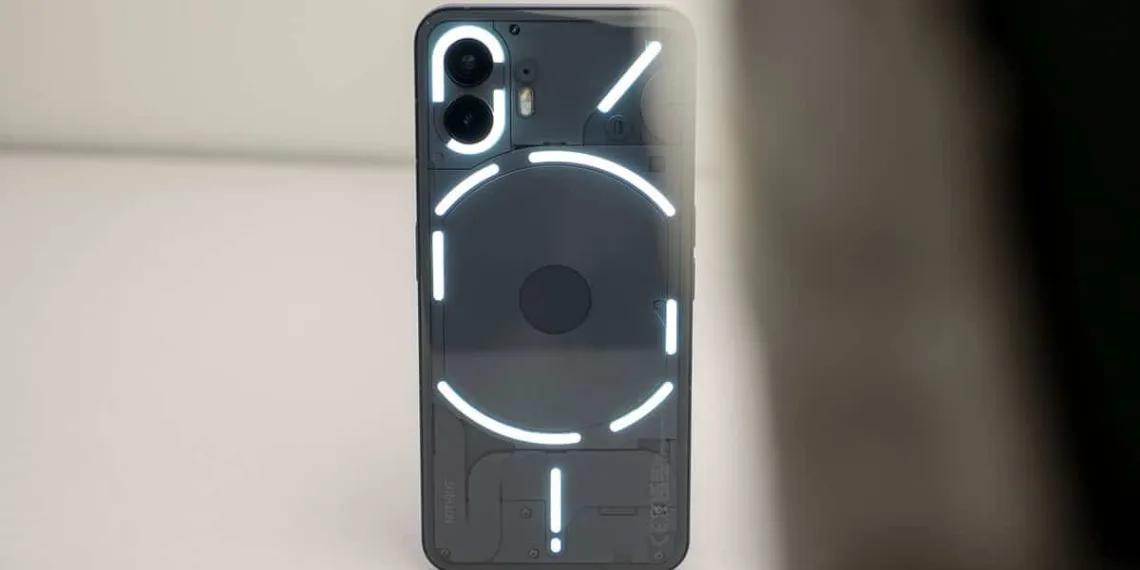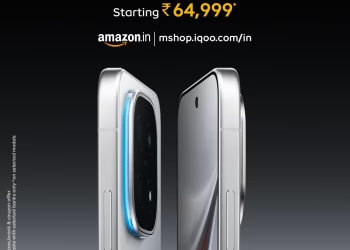According to prevailing rumors, the upcoming Nothing Phone 2a is anticipated to be the next offering from the company, with its official unveiling seemingly imminent, as suggested by the latest official teaser.
However, details about the device, particularly its design, remain scarce. A recent leak has provided some insights, revealing that the phone is set to feature a MediaTek Dimensity 7200 chipset. Notably, the back of the phone is expected to showcase a distinctive design departure from other Nothing models, characterized by a three-glyph styling.
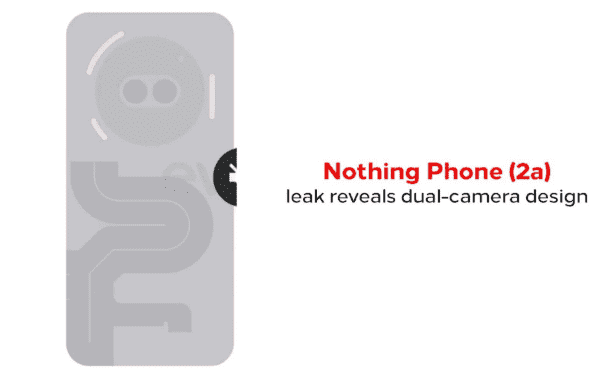
The Leaked Nothing Phone 2a
The most recent leak unveils images of a device in the wild, identified as a PVT unit (Production Validation Test). PVT units constitute an initial manufacturing batch designed to validate and confirm the functionality of manufacturing processes while ensuring that the devices meet specified standards and quality requirements. Typically, such units are enclosed in a larger external case deliberately concealing their design, as is evident in this scenario.
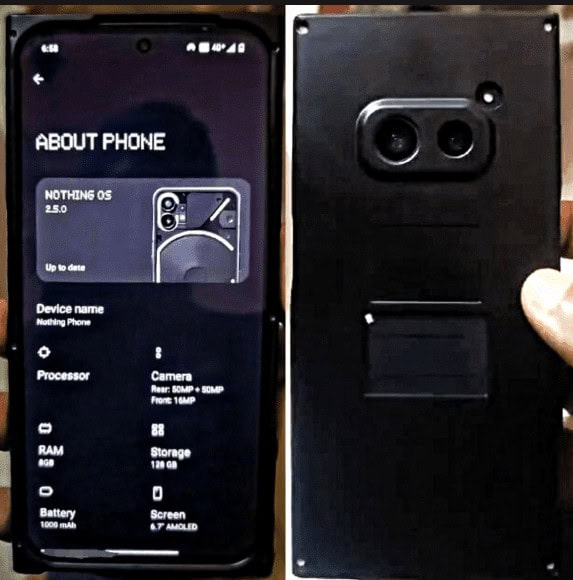
Despite the concealed design, the leak provides a clear view of the horizontal camera arrangement on the back, a departure from the design seen in previous Nothing Phone models. If the information from the source is accurate, the Nothing Phone 2a is expected to boast a 6.7-inch, 120Hz OLED display, the MediaTek Dimensity 7200 chipset paired with 8GB of RAM and 128GB of storage (with the possibility of other memory variants).
The device is reported to feature two 50MP rear cameras akin to the Nothing Phone 2, along with a 16MP selfie camera. The phone is slated to run on Nothing OS 2.5 and Android 14.
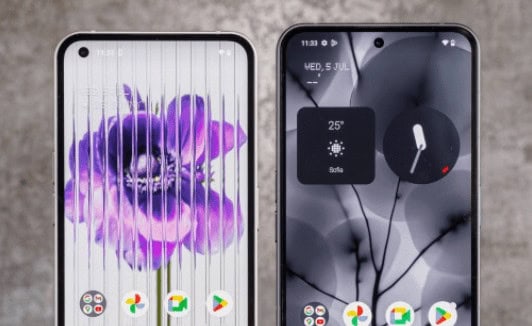
It’s essential to approach certain details with caution, as the About screen on the phone lists an erroneous battery capacity of 1,000 mAh. Nevertheless, the source suggests that the Nothing Phone 2a is expected to make its debut at MWC in February 2024, with an estimated retail price of around $400.
As always, these details should be taken with some skepticism, considering the fluid nature of pre-launch information and potential inaccuracies.

